Positional Play of football is a way to see the game. What are the most important key points which affect the successful implementation of the specific methodology? The behavior of each player in each position is the most important factor. Each coach has a different approach as to how to implement the positional play. But there are some core values that cannot be neglected. These days there are several coaches who follow the Positional Play either in a small or larger percentage.
The evolution of football tactics has seen teams like Bayern Munich exemplify the effectiveness of positional play. A notable innovation within this framework is the use of inverted wing-backs, where full-backs move into central midfield areas to dictate play and maintain possession.
This tactic not only disrupts opposition setups but also emphasizes the importance of players’ technical skills and spatial awareness. Such strategies highlight the need for young players to develop a comprehensive understanding of positional principles from an early age, ensuring they can seamlessly adapt to advanced tactical systems as they progress in their careers.
SOS!! Do not confuse Positional Play with Possession Game. Read the article Possession Games and Positional Games – The 2 unique types of drills to learn the difference.
Pep Guardiola, with FC Barcelona, Bayern Munich and Manchester City, Luis Enrique, Xavi Hernandez, Thomas Tuchel, Louis Van Gaal, with top clubs including Manchester United, are some of the coaches who use the Positional Play training methodology to build their teams.
Rinus Michels’ ideology at Ajax is probably the first and most visible presentation of the principles of positional play. One of his players, Johan Cruyff further developed those ideas first at Ajax and Dutch National team and then at Barcelona. Through these two coaches, the Dutch idea of Total Football was brought to life. But it was Guardiola, a student of Cruyff, who put positional play to the top of the tactics in the modern game.
Positional play or Positional game, applies to any part of the pitch. Many confuse it with the just build-up, other than goal-kick restarts and play always in the first zone or just keeping the ball but a midfield vertical play to the attacking half and the final third can also follow Positional Play principles. The intention remains the same throughout – to create space and several passing options for the ball carrier. The precise tactical requirements will vary depending on the area of the pitch and the exact intentions of the coach.
1. Positional Behavior
All players have to understand fully their roles and responsibilities in the position they hold. In any situation, the priority is to follow the principles and sub-principles of the game model. Some coaches allow much freedom to their players and fluidity in their game, like Pep Guardiola. Even though fluidity can create “football chaos” the basic duties in the attacking and defending phases from each player are always in priority. Any other above actions must be done only if the primary duties are successfully completed.
Usually, the coaches who implement such kind of methodology use mainly Positional Play drills and pitches divided into horizontal and vertical lines. Using gridded pitches the managers can enhance the desired behaviors. For example, a guideline for a winger and a full back during the attacking phase could be to hold different vertical lines when the ball is in the wings. This creates different passing lines and options to receive the ball between the lines.
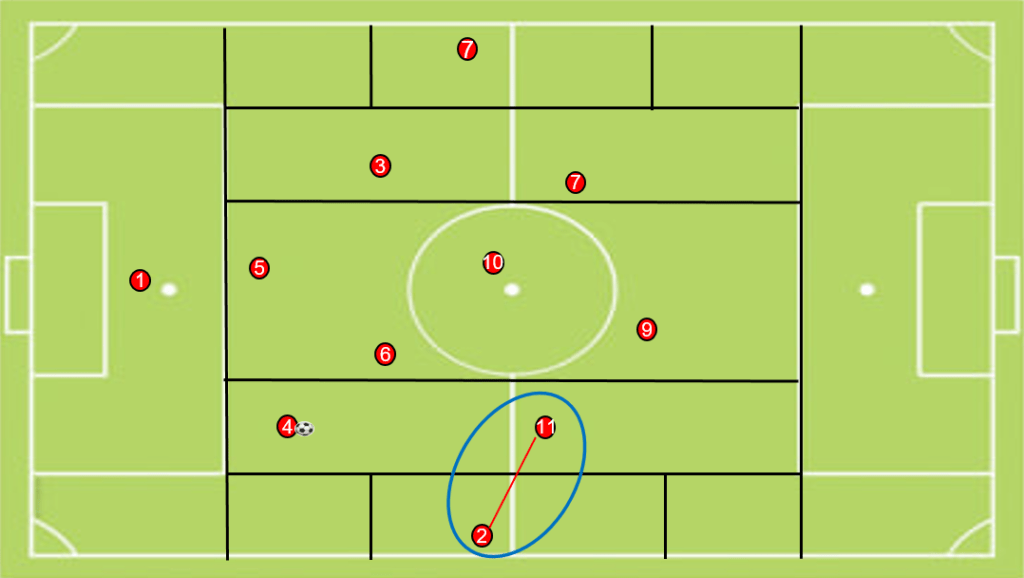
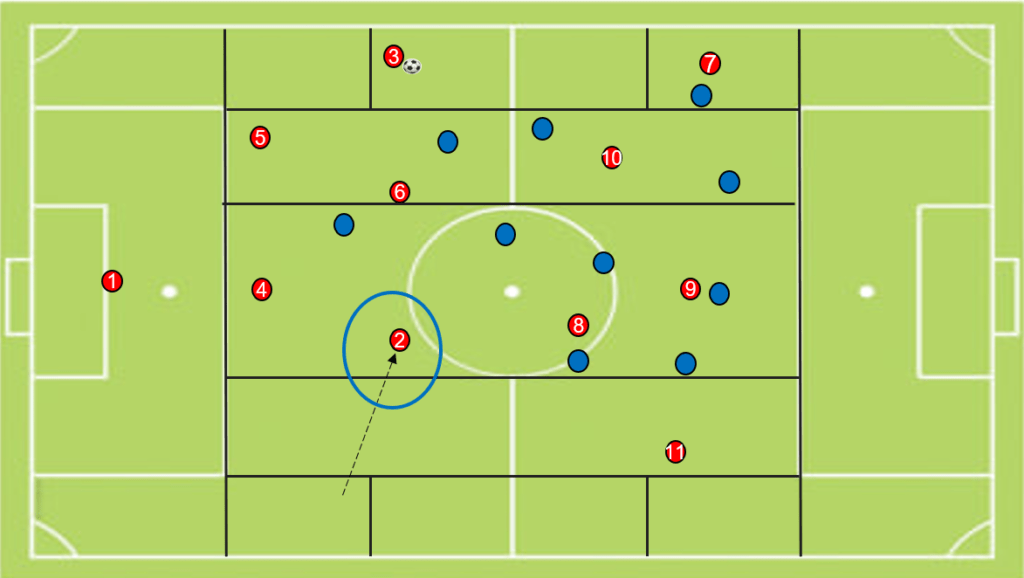
In recent years we have heard a lot about the Salida Lavolpiana build-up in the world of football. In simple words, it’s the tactical effort to create numerical superiority, or even positional superiority by bringing players between the lines higher up the pitch while dropping the defensive midfield player in the first line (defending line) to overcome the opposition pressure. The innovator who first thought of that tactical movement was Ricardo La Volpe.
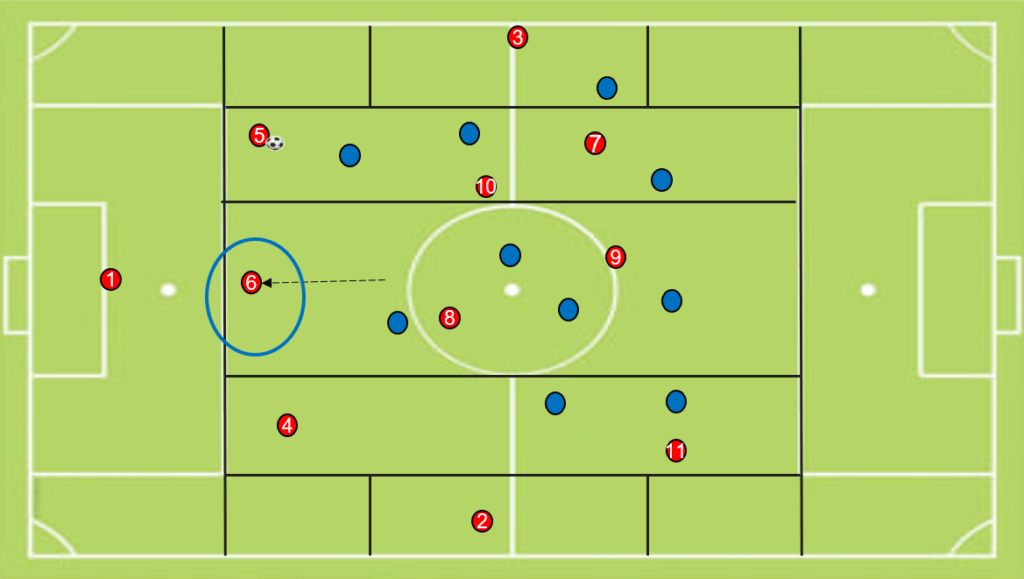
30 Possession, Positional and Small Sided Games
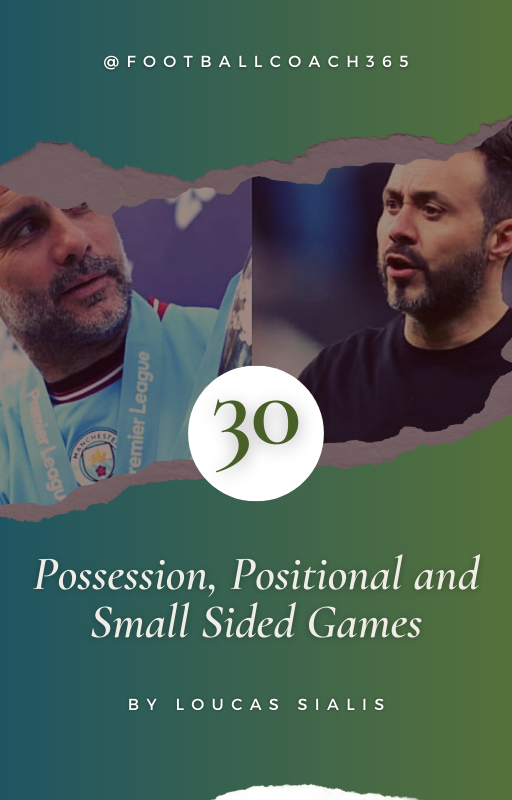
Dive into the world of tactical mastery and player development with an expansive collection
- High Tempo Football
- Players develop their technical skills and tactical understanding
- Players cultivate essential life skills such as communication, leadership, and resilience.
- They learn to adapt to varying game situations
- Think critically under pressure, and collaborate effectively with teammates
- Forging bonds that extend beyond the final whistle.
2. Player’s technical abilities to needed to implement positional play
Whether using high ball possession or not, either playing a counter-attacking way of football or using passing games the player’s high technical abilities have to be at a high level. Passing and receiving are probably the most valuable skills that a player must have in order to play positional play football.
“Technique is not being able to juggle a ball 1000 times. Anyone can do that by practicing. Then you can work in the circus. Technique is passing the ball with one touch, with the right speed, at the right foot of your team mate.”
Johan Cruyff
Teams like Barcelona, Manchester City (under Pep Guardiola), Chelsea (under Thomas Tuchel), Tottenham (under Mauricio Pochettino) and Real Betis (under Quique Setién). What common characteristics do they have? They are teams who managed to implement a Positional Play at a low or higher percentage. All of these teams had highly technical players in their squad.
It’s not mandatory that a team must have a roster full of technically good players. This requires a very big budget. As you can see, the above list includes Real Betis, a club relatively small compared to other Spanish giants. But, Quique Setién (2017 – 2019) managed to present an attractive football with fewer highly technical players but in very important positions.
The attacking midfielder Takashi Inui was an important point of reference in Setién’s team. The Japanese player was one of the revelations of the 2018 World Cup in Russia. With his goals and direct running from the left-hand side. William Carvalho was a player with a high ability to switch the play on both sides. During his time in Real Betis under Setién he presented a magnificent range of passing.
3. Understanding the space and time
To play a game based on the positions on the pitch requires a high ability of understanding space and time. Each play has to identify what he must do at any time given, based on the area of the pitch he is, and to coordinate his movements based on what is happening.
When you play a match, it is statistically proven that players actually have the ball 3 minutes on average … So, the most important thing is: what do you do during those 87 minutes when you do not have the ball. That is what determines whether you’re a good player or not.
Johan Cruyff
The player’s actions the majority of the time are without the ball. A high football IQ is what separates a good player from a top one. Movements into the space to take advantage of free spaces are proof of high football IQ. Players can move to space for:
- Provide passing option
- Create space for themselves (fake movement)
- Create space for their teammates
Players can create space for their teammates by stretching the pitch and positioning themselves far away from the ball carrier. Positional changes and rotations are probably the easiest to identify movements to create space or take advantage of it. The most popular and used one is the wide positional rotation, with the winger getting inside and the fullback pushing up.
One of the most usual movements in space is a forward run in the half-space, behind the opponent’s full-back. The center forward keeps a central position to occupy the opponent’s central defenders and a player from a deeper position makes a forward run movement. Of course, in case there is no midfielder near the area, the center forward can make the move. In such cases, another player from another line or position will become the central forward. With this positional change, the opponent’s center backs will be forced to stay centrally.
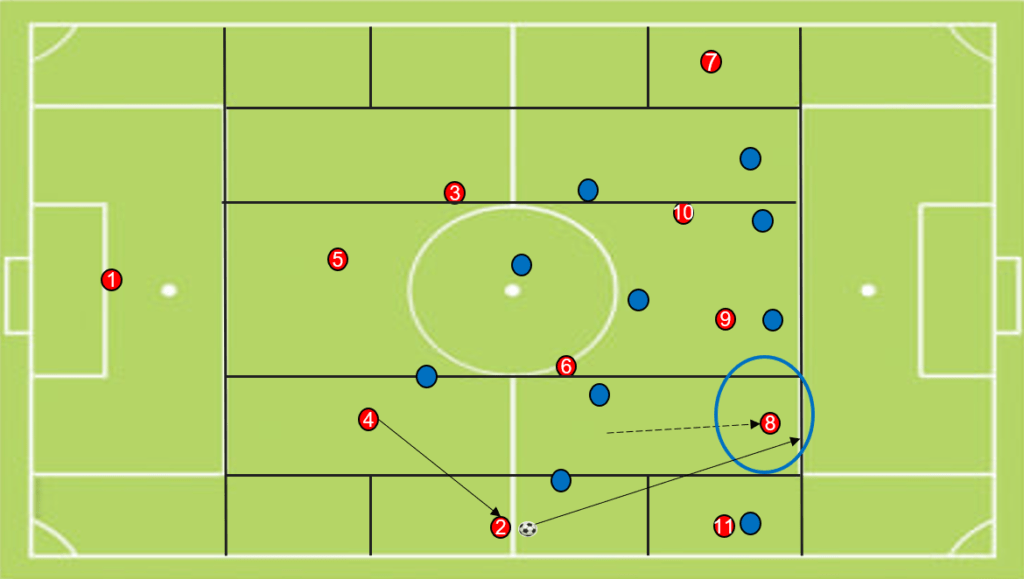
Utilization of Positional Games in training
Using Positional games in training (instead of just playing possession games) will enhance the habits needed to implement a Positional Play style.
Conclusion
Positional Play is probably the most attractive way to play the game. At the same time is one of the most demanding training methodologies to follow. It needs many hours of teaching and training the players in order to fully understand the main principles.
Superiorities, numerical advantage, movements without the ball, creating triangles, and rhombus are some of the key tactical points. But before proceeding with any tactical instructions, a coach must first evaluate his team if the 3 important pillars of Positional behavior, high technical ability, and understanding of space and time are characteristics that his group possesses.
By examining the roles of players like Bernardo Silva and Kyle Walker, we observe the critical importance of technical skill and tactical intelligence in modern football. Silva’s adeptness at navigating tight spaces and executing precise player rotations embodies the essence of positional play, while Walker’s versatility as a defender showcases the adaptability required to counter various opposition tactics.
These examples underscore the significance of instilling robust positional principles in youth football, ensuring that emerging talents are well-equipped to thrive in sophisticated tactical environments.
The community of FootballCoach365 loves all football discussions!!!
Feel free to comment below if you have a different opinion on which are the important pillars!!
The book “Positional Play in Modern Football” can give much more information on the theoretical aspect of the methodology.

